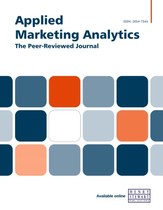The three stages of workforce optimisation: Moving beyond the industry standard
Abstract
Erlang-C has long been the industry standard for call centre staffing. As callcentres evolve and staffing concerns move to other industries, the standard methodsdon’t always work as expected. While traditional scheduling methods focused ontranslating historic demand into staffing needs, the estimation of demand and thelogistics of scheduling employees have not always been equally considered. Through theanalysis of multiple use cases from distinct industries, this approach evaluates all threestages of workforce optimisation and explores the gap between theory and reality.
The full article is available to subscribers to the journal.
Author's Biography
Dakota Crisp has a PhD from the University of Michigan. His hypothesis-driven approach to integrating concepts from neural engineering into the data science space provides a distinctive take on consumer behaviours.
Jess Brown has a BS from the University of Michigan. Her background in computer science introduces a focus on bringing models to life through unique implementation strategies.
Jack Claucherty has a BS and MSE from the University of Michigan. He brings an industrial engineer’s perspective to data science with a focus on complex systems and states.
Davis Busteed background in information systems provides a creative approach to problem solving with cutting edge data techniques.
Anna Schultz is a BBA graduate from the Ross School of Business. Anna has spent her career in marketing and analytics at RXA. She takes pride in building marketing strategies and materials that blend unique design with useful and direct communication. In analytics, she has worked with companies from a wide variety of industries to collect, transform and visualise their data to deliver actionable insights throughout the company.
Jonathan Prantner is Chief Analytics Officer and co-founder of RXA, where he leads efforts surrounding applied artificial and machine learning as well as integrating advanced analytics with data visualisation platforms. Jonathan’s career has spanned educational research, automotive, consumer packaged goods, travel and healthcare. Jonathan is a celebrated thought-leader and recipient of multiple data science patents whose approach to applied mathematics has pushed analytics to the limits for over two decades.
Citation
Crisp, Dakota, Brown, Jess, Claucherty, Jack, Busteed, Davis, Schultz, Anna and Prantner, Jonathan (2022, June 1). The three stages of workforce optimisation: Moving beyond the industry standard. In the Applied Marketing Analytics: The Peer-Reviewed Journal, Volume 8, Issue 1. https://doi.org/10.69554/GWUS6125.Publications LLP
